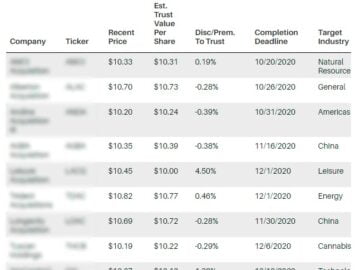Seeking out great stocks to buy is essential, but many would say it’s even more important to know which stocks to steer clear of. A losing stock can eat away at your precious long-term returns. So, figuring out which stocks to trim or get rid of is essential for proper portfolio maintenance.
Even the best gardens need pruning and our team has spotted a few stocks that seem like prime candidates for selling or avoiding. Continue reading to find out which three stocks our team is staying away from this week.
Over the past couple of weeks the market’s confidence in digital currencies has been rattled, possibly to the point of no return. The move lower in cryptos has led to a more than 60% decline so far this year for MicroStrategy Incorporated (MSTR), a leading worldwide provider of business intelligence software.
You’re likely wondering why the enterprise software company has been so deeply affected by the decline in cryptos. Well, the answer may shock you. Executive Officer Michael Saylor has gone all in on Bitcoin over the past two years. Since May of 2020, MicroStrategy has purchased nearly $4 billion worth in Bitcoin.
However, MicroStrategy didn’t buy Bitcoin with its own money — the company borrowed part of it. On March 29th, MicroStrategy announced that it had secured a $205 million loan from Silvergate Capital to purchase Bitcoin. And it collateralized this loan with Bitcoin. It was a decision that seemed brilliant when he invested billions in the top crypto as it was surging. But it’s been disastrous on the way down as BTC price has plunged more than 50% since the purchase.
Chaos in the crypto market is intensifying. At the time of writing this, the price of Bitcoin is at about $21,000, meaning the company will likely need to provide more collateral to avoid liquidation. According to its Q1 presentation, MicroStrategy has over 95,000 Bitcoins it can use to satisfy its lending agreement with Silvergate Capital at a loss to the company.
Even if the company’s Bitcoin position doesn’t get liquidated, it has more than $1.6 billion in convertible senior notes due in 2025 and 2027. Until there’s a concrete plan in place to create shareholder value with Bitcoin, MSTR is one stock we’re staying away from.
Headwinds against e-commerce car vendor Carvana (CVNA) had already been intensifying before the sizable ramp up to its vehicle inventory in the first-quarter. Management recently admitted that it accelerated its car buying business at the wrong time, during a worsening economic environment, causing investors to flee the stock in search of greener pastures. CVNA could continue to burn through cash at an alarming rate as it faces threats to the value of its inventory.
“It has become clear over the past few months that the company is facing serious challenges to the business,” Morgan Stanley analyst Adam Jonas wrote in a note to clients after he downgraded CVNA to Equal Weight from Overweight and slashed the price target by 70% to $105, down from $360. “By the company’s own admission, it had accelerated growth at precisely the wrong time into a consumer slowdown leaving a major mismatch between capacity and demand, creating a liquidity crunch,” he continued.
The company’s liquidity issues are likely to be compounded as the Fed boosts benchmark interest rates, making it more expensive to take out loans. With its business model, Carvana is also at risk of a decline in used car prices as that would devalue its inventory, and a pullback in prices is likely as interest rates rise.
During Carvana’s most recent quarterly announcement, the company reported a bigger-than-expected quarterly loss along with revenue that beat analyst expectations. Results showed a $1 billion increase in equity along with $3.275 billion in debt.
Carvana may look like a bargain down nearly 90% since the beginning of the year, but with interest rates rising and growing concerns of a looming economic recession, the company could be further wrung out as economic growth slows.
Medical technology company Medtronic Inc. (MDT) tops our list of stocks to avoid following a rough finish to a fiscal year wrought with turmoil. The company was already struggling to recover from medical device recalls and an FDA warning when China enforced Covid-related lockdowns. During its fiscal fourth quarter of 2022, revenue from China, which accounts for over 40% of the company’s emerging markets revenue, declined 10%.
Medtronic missed on both the top and bottom lines for Q4. Revenue came in at $8.09 billion which was 4% below expectations for $8.43 billion. Earnings per share came in at $1.52 which was about 2% off expectations of $1.56.
The medical device maker has also been facing higher raw material, labor and transportation costs, stemming from inflationary and supply-chain challenges. Against this backdrop, the company cautiously lowered its guidance for its financial year 2023. Management now expects adjusted earnings for financial year 2023 of US$5.53 per share to US$5.65 per share, below analysts’ estimates of US$5.82 per share. “Supply chain, inflation, and foreign exchange are expected to create near-term pressure,” commented Medtronic chief financial officer Karen Parkhill.
MDT share price is down 16% so far in 2022 and many of the obstacles that sprung up over the past year remain unresolved, for the industry and for Medtronic. We’re avoiding this stock until concerns abate.









